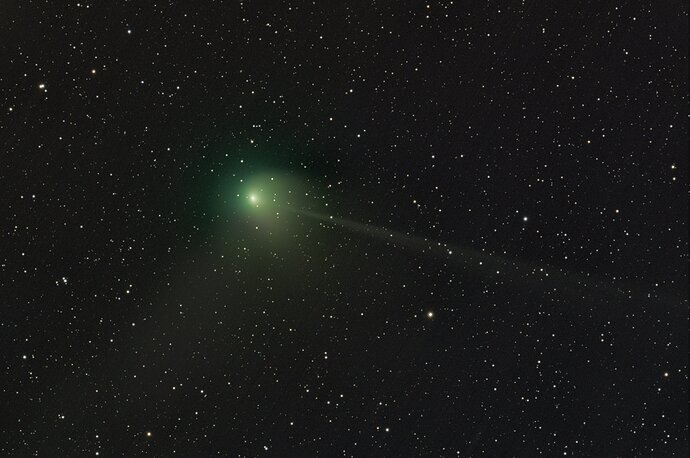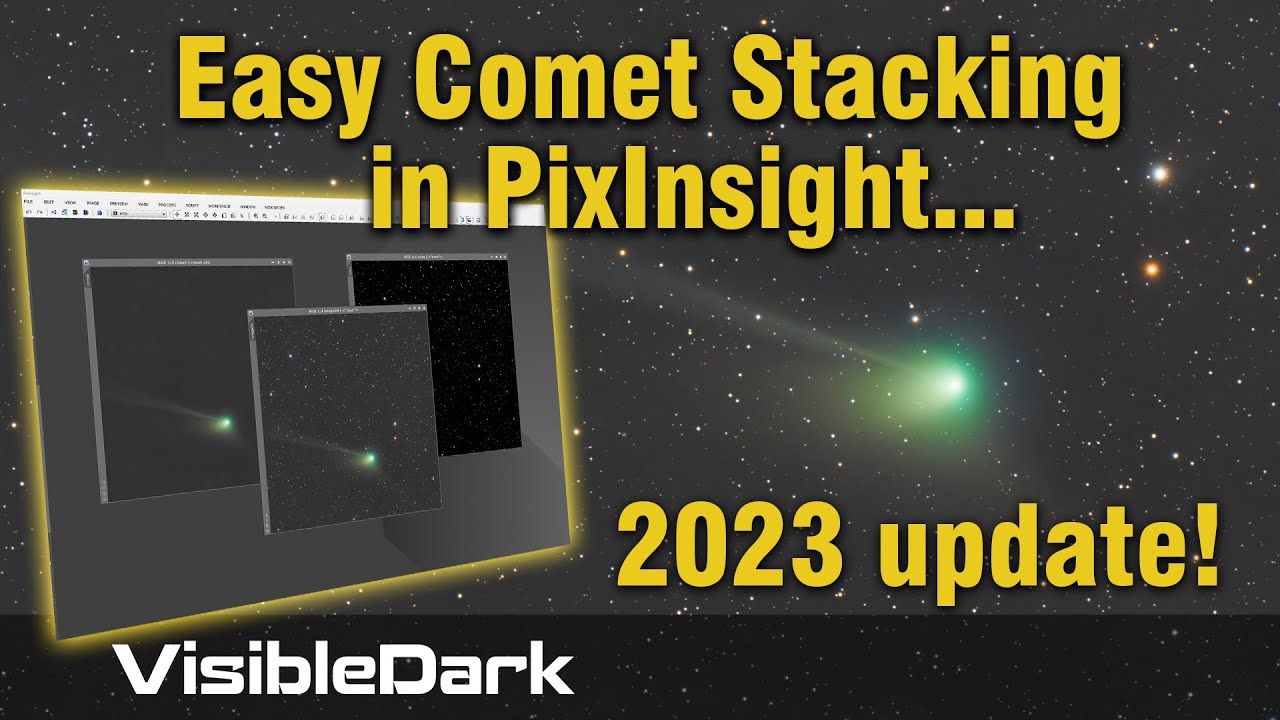It was insanity to try for this. Took most of a week to finally get the shots with speed bumps with a new rig, then to figure out how to process it – there are about 37 ways, most using both acquisition and processing software I don’t have. But I finally found the right instructions for what I do have with one added plugin, which is very good. This stuff is all a huge jigsaw puzzle with no manuals and the software changes under your feet.
The problem is that it is a small, dim target so needs the astrophotography technique of lots of exposures over several hours, which are then integrated into a single lower-noise image for further refinement. But that sort of astrophotography is done by tracking the stars and the comet moves relative to the stars, even in a few seconds. So there is special software to let you align the stars and the comet separately in those sub-exposures and combine them into one image.
Type of Critique Requested
- Aesthetic: Feedback on the overall visual appeal of the image, including its color, lighting, cropping, and composition.
- Conceptual: Feedback on the message and story conveyed by the image.
- Emotional: Feedback on the emotional impact and artistic value of the image.
- Technical: Feedback on the technical aspects of the image, such as exposure, color, focus and reproduction of colors and details, post-processing, and print quality.
Specific Feedback and Self-Critique
These night sky objects have an emotional impact on me, but maybe not on everyone. They give a hint of the vastness of the universe and of how much we can’t experience in our daily lives. And doing that well takes technology. I guess these objects fall into all the critique categories, in a rather unique way. It takes some background looking at various attempts, but there is definitely a range of good and bad in all of the above categories for the various images we can see online. In all of them, there is good and bad cropping, sharpness, detail, color and all the usual aspects we try to maximize in our daylight photography. Good software helps with all that but like the best cameras, lenses and tripods we all use, at its best it can only give good raw material to work with. And the software, just like the stuff we use for daylight work, is only another tool that has to be used right. There is some leeway with “auto” things, but there’s lots more to it to bring out the best. Just the software processing on this took about 7-8 hours on a fast computer.
This was shot with a 60% moon high in the south, with the comet in the north, so there is some loss of contrast from the moonlight in our moderately light-polluted skies. This is a first quick processing attempt and could be tweaked a bit more after I learn a bit more. Should have a chance to shoot it again in a couple of nights, but the tail may be less prominent and it’s moving away and getting dimmer so it may be a wash.
Technical Details
400mm Askar FRA refractor telescope, ZWO2600MP Pro camera (APS-C sized sensor), Sky-Watcher EQM 35 mount, ASIAIR on-board computer control, Pixinsight processing software.
Trust me – you don’t want to be bothered, but here’s the process:

